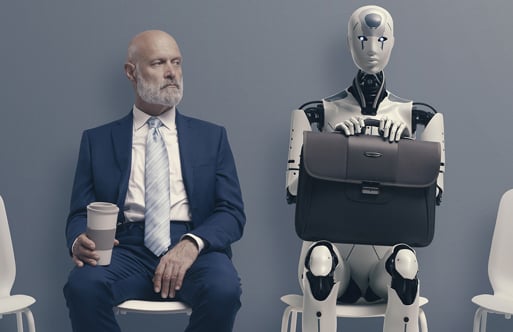What can the developments of the past decade tell us about where VFX is headed in future?
I think visual effects have become a hybrid between technology and artistry. It’s now got to the point where live action and digital animation have become pretty much indistinguishable. And, in future, it’s going to get even more advanced. When you see a film these days, most of the video effects are invisible; such have been the advancements in technology within recent years. The artist has now got more tools and more power at their disposal.
As a visual effects supervisor, I’m always on the look-out for more tools to be able to make my work appear to be more realistic on screen. Even on low budget films, you’re now getting that kind of access to digital technology, which is becoming more readily available, whatever your budget.
So, has the visual effects tool kit become cheaper for a wider range of filmmakers?
Yes, and I think we’re going to see some huge advancements in camera technology development too, and there’s going to be significant advancements in green-screening and chromakey technology. The video effects field is evolving at a rapid rate. In just the last ten years we’ve had a huge increase in low budget films, turned to high-end looking films because of their digital effects being so advanced. If you look at how CGI has evolved, it’s come a long way in a very short time; for example, the use of single-point geometry.
Look at the applications out there, such as Snap Chat, which uses motion-tracking. It’s proxy-generated mapping on your face so you can take on bear-like features etc. Any technology that helps you reduce your time has got to be welcomed.
Apps which are useful for filmmakers or amateurs alike are the likes of: Sun Surveyor, which allows you to anticipate the sun’s path from sunrise to sunset on a geographical map with astonishing accuracy; Shotlister, which helps you to keep track of your shots; Celtx, an all-in-one app, that helps with pre-production workflow. There’s also Green Screener, which can help you to get your lighting right; Artemis, which is good for when you’re doing location scouting; Digital Clapper, which is a helpful synch tool for creating timecode snapshots on film sets with multiple cameras and sound devices. And Video Space Calculator that can help you calculate the disk space taken up by a specific codec, which is really useful as it supports over 80 codecs.
I think in the next couple of years we’re going to see a huge increase in virtual production and performance capture, which is becoming streamlined and, hence, becomes more organic. As it becomes easier and cheaper to use, performance capture usage will grow exponentially.
Post Avatar we’ve seen a lot of advances in performance capture technology; how far do you think we can go? Do you think we’ll ever fully conquer the ‘uncanny valley’ issue, where human replicas appear almost (but not quite) like human beings? I’m thinking specifically of the digital Peter Cushing in Rogue One.
Well, that was done with an actor on set with tracking markers on their face, and they enhanced it. Now, because the algorithms used for visual effects are becoming more advanced I think anything will soon be possible. Way back in the Nineties we had Final Fantasy, which was impressive for its time, and now we have films like Ready Player One, which was pretty much all performance capture, which helped the audience to buy into that synthetic world. You’re never going to replace the actor - you’ll always need actors - but I think we’ll be using this incredibly sophisticated tool kit to make filming safer in the industry. Stunt guys are truly amazing, but with greater demand for very dangerous stunts, increasingly video effects teams are being called in to create computer generated action sequences because they can be controlled, whereas in real-life total control is near impossible. As visual effects improve so audiences will be fooled into thinking they actually saw a stunt sequence happen for real.
Won’t that put the stunt industry out of work?
From a safety point of view there’s only so much the human body can achieve (as Tom Cruise recently proved when he broke his ankle in the most recent Mission Impossible movie). Even on the most expensive, best organised shoots things can go wrong, as Mr Cruise proved! As visual effects become more established we’ll have more virtual sets, where you can change all your angles easily, choreograph all the action, and see how it’s all working in a safer environment. Plus, it reduces costs enormously.
Financially, visual effects production can be a risky business. For example, the company Rhythm and Hue Studios (winner of the academy award for visual effects in 2013 for The Life of PI) filed for bankruptcy at the same time. Will a fully digitised workflow make this less likely to happen in future?
I can’t really comment on what happened with their business. However, when a business files for bankruptcy it can be down to a whole host of issues. They could have finished the job, but there could have been other factors involved. Until you have all the facts, people – especially the media – will always speculate and point fingers. It could have been down to bad management or external factors – who knows?
The film industry is such an up-and-down industry, so if you’ve got a large facility and you’re employing a lot of staff you can’t just rely on one product. Ultimately, like so many other things, it’s about management at the end of the day, and how you look at costing.
Has the democratisation of film (through the industry going mostly digital) been a good thing overall for filmmakers and consumers?
Digital technology has given the freedom for directors and filmmakers to have more options on the table. The technology has got more and more advanced, so that with, say, virtual sets, it means the DoP (director of photography) and the director can walk around the virtual set and plan everything in that environment so it makes it more cost-effective. In a VR environment, being able to see the shots, the angles, you can plan everything minutely to suit your budget.
Some older filmmakers have reverted back to anamorphic film because of the textures and the final look. Although digital cameras are quite high-end, film has still got that inherent richness to it, and when you watch the film you can ‘feel’ the warmth. Personally, having used film in my career, I think it’s a lovely medium to shoot on. But, when you have only a limited budget the digital intermediary gives you more flexibility in what you can produce and reduces costs too.
Talking about films, in general, why do you think the average length of movies increasing? In 1997, average length was 104 minutes and in 2017 108 minutes.
Most films still tend to be about 95 minutes, but I think because cinema prices are more expensive nowadays all the big studio films, such as the Marvel super-hero ones, realise that people want more ‘bang for their buck’; after all it’s all about entertaining audiences and keeping them coming back to the cinema as a night out. I think if you’ve got a good story to tell you sometimes need to give yourself longer to tell it. And recent trends in TV have meant that people want to feel more invested in characters, hence films taking longer to introduce those characters.
Will Blu-ray be the last physical distribution format for movies?
Not Blu-ray, it’s actually 4K UHD discs, but they’re not so widely available. There are 4K players, which play 4K UHD discs. All the major manufacturers produce and supply them – and they play CDs, DVDs, Blu-rays and 4K UHD discs. Although it’s a new physical medium, the new generation, the Millennials if you like, they are the digital natives and consumers of the future, and they’re not all that bothered about having a physical product in their hand. They lead a different life-style to my generation, which liked going out and having a physical, personal connection with, say, an album, audio tape, VHS, or DVD; something that you could pick up. Habits are changing and most people now buy everything they want or need online, which is resulting in so many stores closing, such as Maplins.
Where do you see film production heading next – HDR, 8K?
The problem with 4K, (and bigger), are the actual physical file sizes to work with, and for storage. From HD to 4K is quite a big leap, in terms of file size. In film production you’ve got to back it up and back it up again. You back the files up to several places, which obviously requires a lot of space, and can get expensive. I think recent research has seen scientists recording digital data onto DNA, which, in future, could see Sci-Fi stories, likes Johnny Mnemonic, becoming reality. I think, in future, your body will become the host for the data you want to store and use. If DNA could be accessible in order to store media files on it, the possibilities are endless.
How do you see the future of virtual reality in film and TV developing?
Well, as I’ve already said, with virtual sets, the DoP and the director can walk around the virtual set and plan everything in advance, so it makes it more cost-effective. In a VR environment, being able to see the shots, the angles, is really helpful. VR can be such a great learning tool and teaching aid where you can hold on to things and go through procedures virtually. It’s one step closer to what they had in Star Trek with the Holo-rooms. The problem, at the moment, with VR is that you have to put the headsets on, which can have health implications with shared units, which puts some people off. VR is a superb tool for doing ‘walk-throughs’ and having that virtual interactivity at your finger-tips, but it needs to progress to the next stage in order to increase uptake.
How do you see the future of 3D and 4D formats and technology?
I see a similar issue with 3D as I do with VR, in that uptake will be slow until you get rid of the need for people to have to wear special 3D glasses. Having said that, there’s a company in France, I believe, that make 3D televisions that work without the need for punters having to use 3D specs. LG have also been experimenting in this field. I think if you could have a TV screen or cinema screen that you could watch a 3D film or TV show on without needing special glasses, then I think more people would buy into that because you’re not having to put something physical on your face, which a lot of people hate having to do. I think 3D technology will increase in popularity again once such issues have been ironed out.
Is there any future for the AI screen-writer or is it just a gimmick?
I think, judging by the leaps and bounds in AI technology at the moment, there’s a real possibility that in future we won’t be able to tell the difference between an AI screenwriter and a human one. How would we know?
Do kick-starter sites like Indiegogo represent the future of film-funding?
I think those kinds of sites are really good for helping to fund what I call ‘garage-based projects’; people developing a gizmo in a garage, that have successfully done the first bit of R & D, but need an extra boost of cash to take it onto the next level. Half the ones I’ve seen are so deserving of funding… However, I think that from a film perspective, there are so many people around all clamouring for funding, it’s becoming increasingly difficult to make yourself stand out from all the rest. You need to also have a good social media presence to really sell the idea to an audience.
What are your thoughts on social media’s role in film distribution? For example, Warner Bros have started to digitally rent out movies on Facebook.
It’s like with Amazon who are just giving another platform where you can view product. It’s the same principle: having it on Facebook, on Netflix, on Hulu, on Amazon etc., it’s essentially another platform for you to view content on. But it’s not like going into a video shop, it gives you the chance to quickly see what you want to watch and you buy it, and consume it straight away.
On a side note, I think the BBC needs to evolve and become a subscription service where people buy into the services, the programmes they want to watch and not have loads of stuff forced upon them that they don’t want to pay for. Way back when the BBC was first formed I can understand the need for a licence fee, but nowadays people are choosing what they want to watch, and don’t want to be dictated to by other people. From a corporation perceptive, I think the BBC is looking increasingly archaic. Most of my news I get online, on my mobile, and a lot of the programmes on the Beeb aren’t really applicable to me, and what I like, so why should I pay for them? So I will choose to go onto Amazon or Netflix and choose to get what I want to watch.
What are your thoughts on ‘light-field technology’, where all the information is captured?
The problem, again, is the huge file sizes involved in this kind of technology. We had SD originally for television, then high-band neumatic, and then we had the big leap over to HD, and 4K, and beyond even those. The storage has to keep up with that progression in technology because it’s going to get to the point where you have to have a faster medium to be able to access those sorts of files. We’ve gone from USB 1.0 to USB 2.0 to USB 3.0 and now to USB 3.1; so the technology is getting faster, but at the same time we’re creating bigger files and bigger systems. Everything is expanding.
What are your thoughts on ‘flat lenses’ rather than the traditional curved lenses?
I haven’t worked with flat lenses, yet. I’ve been a more traditional filmmaker so I can’t really say what they will bring until I start working with them. I don’t doubt that in future I’ll be able to test some of the flat lenses and see how they are. If it improves the look of the image, and improves the framing, and aids me in my work then it’s got to be a positive.
Do you think the film Dunkirk is the start of a return to large format film since it was shot almost entirely on 70mm large format film? We also now have Large Format 14K.
Most people can tell the difference between 2K and 4K from more than eight feet away because it’s much clearer. With 8K, if you pair it with a soft lens you get softer images, but then, saying that, I think 4K HDR is better than an 8K print. Apparently, there are something in the region of a hundred million rods and cones in the human eye so those are a lot of cells to stimulate! But I think the work-flow for processing all that data is just huge! High frame rates are becoming unpopular and a lot of DoPs are becoming sceptical about high dynamic range (HDR). I think we’ll see an increase in large-sensor cinematography in future. Personally, I like working in 4K HDR – I’ve seen the benefits, but I’m not convinced yet about 8K, as you’ll still have to bring it down. The colour range at 4K HDR is physically different from 4K. Even with HD HDR I can see the difference.
Having working in the film industry for a long time what still excites you about it now and coming up in the future?
I think it’s what we’re able to do nowadays that excites me, and gets me out of bed in the morning. It’s seeing the technology and seeing how it’s evolved and is evolving - from when I had my first Avid suite on the Macintosh to where we are today. Most people from the younger generations don’t see the advancements in technology because they’ve been born into that technology, but I was there buying the first Macintosh computer with Avid on there to do digital editing. The file sizes were so tiny compared to today’s files. Technology enables the digital artist to have better tools to work with, which in of itself is exciting.
At the beginning of our technological journey we were learning the process, but now the technology gives the artist more flexibility to be creative. And I think it’s a benefit in movie-making to not always have full-on CGI, but to have those enhancements for a shot where you wouldn’t know that it’s been done digitally, but it’s there quietly in the background, improving the scene.
I think the advancements which are coming, like the virtual sets, makes my job much easier. Everything has to evolve, we can’t just stay in the past, and this is why the newer generations are the ones who will ultimately reap the benefits. However, the guys from way back, when I started, they’re the ones who really cut their teeth on the new technologies, and we should all be grateful for that.
Note: Justin Richards, Editor at BCS, is also a non-executive director at Bazooka Bunny, co-writing scripts with Andrew Dymond for film and television.

















